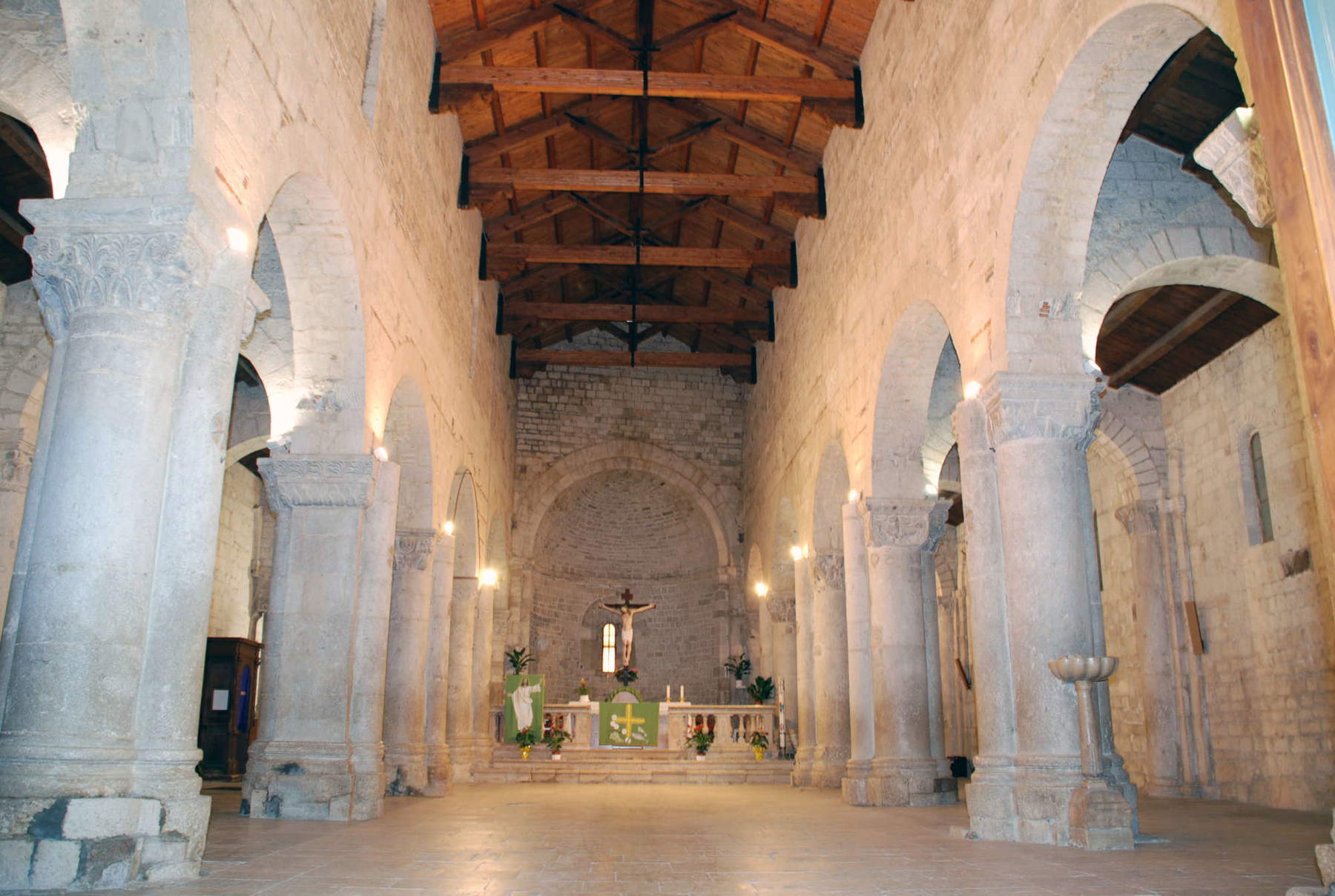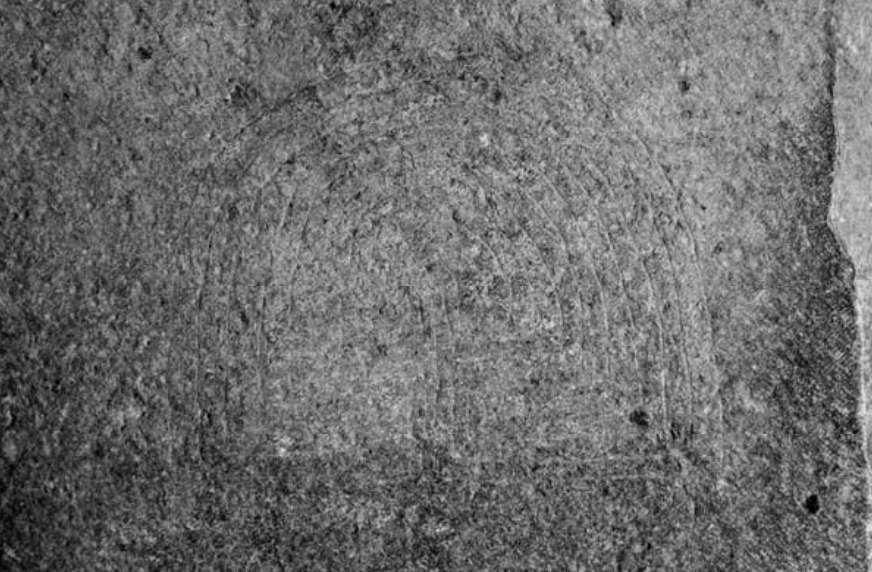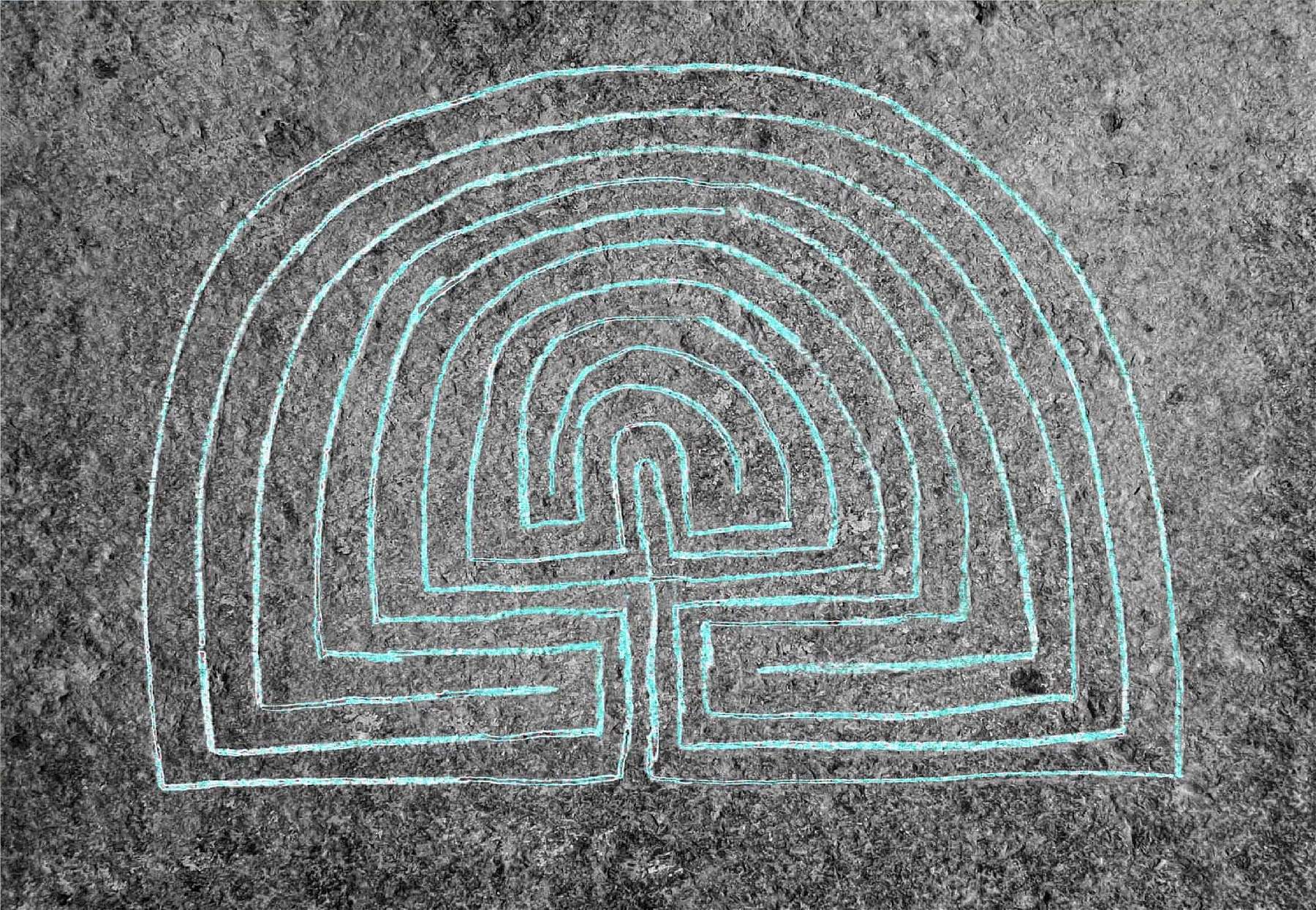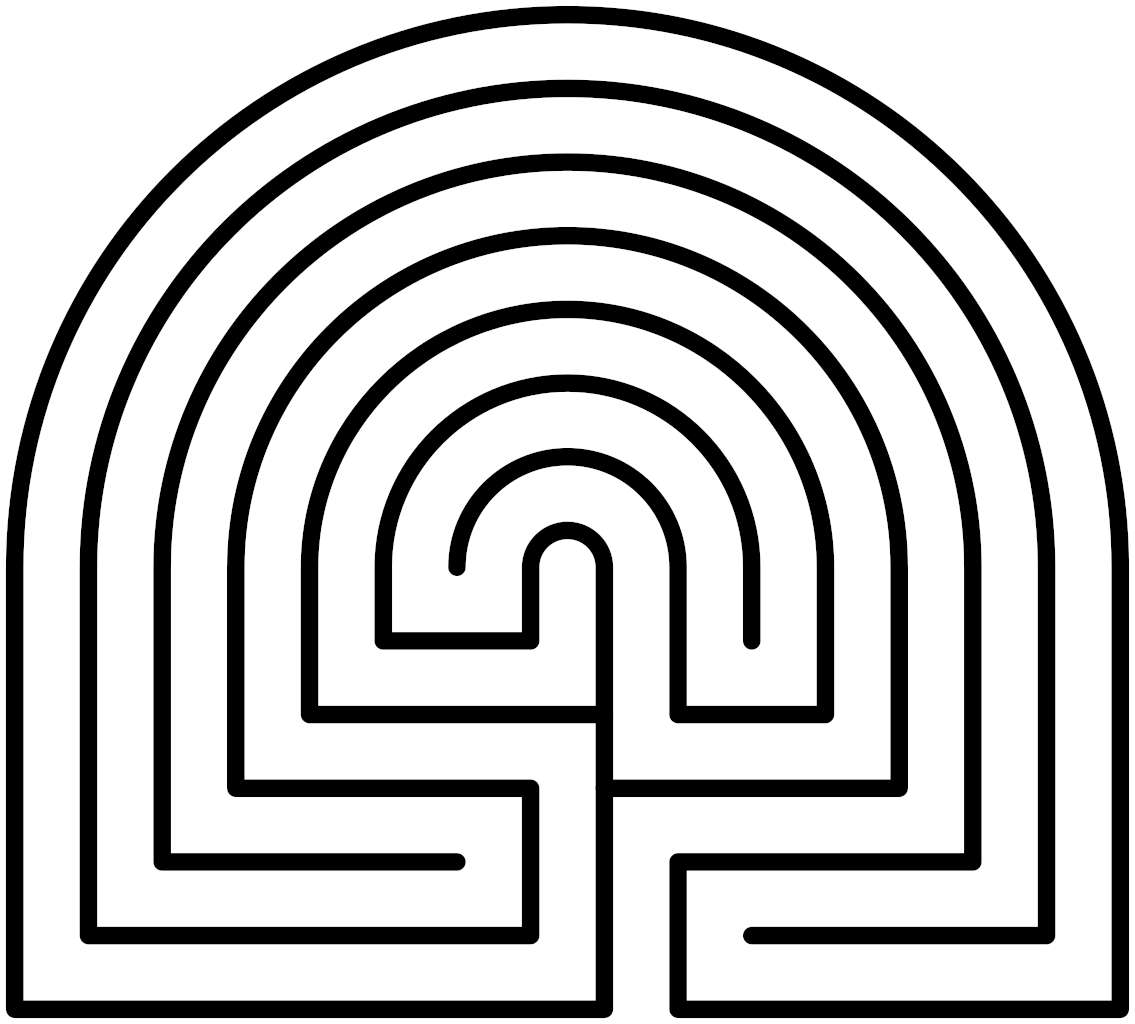A village of a thousand inhabitants nestled in the mountains of theMolise Apennines, a medieval church finished construction in the early 13th century, and a strange graffito that has no other equal in Italy. It is a very special labyrinth that is engraved on the first column on the left in the ancient church of San Giorgio in Petrella Tifernina, in the province of Campobasso. A graffito that went unnoticed for a long time, that is, until young archaeologist Mario Ziccardi realized in 2015 that those time-worn marks concealed a well-defined structure. A labyrinth, then: one of the many peculiarities that can be found in one of the most unusual churches in the region (unusual starting with its shape, with its parallelogram plan, probably chosen because the church was built next to pre-existing buildings, with its raised presbytery, the staggered aisle arches, and the many bizarre figures that adorn its capitals and are taken from both the Christian and pagan repertoires).
The church of St. George is the main house of worship in the village, is dedicated to its patron saint, and its construction began in the 12th century, but its interior contains elements from earlier periods, which is why it is conceivable that many elements that were part of the Byzantine church above which the present Romanesque church rose were reused in the new construction. On the other hand, we have no idea when the graffito with the labyrinth was traced: it is not certain that it was not a motif executed long after the construction of the building was finished, just as we cannot be certain that the execution of the labyrinth was contemporaneous with the completion of the work. Impossible to date it with certainty, according to Ziccardi.

 The caerdroia
The caerdroia

It is located at an elevation of about five feet above the ground, measures about 44 centimeters in width and 35 in height, and is a maze of the “caerdroia” type : by this term is meant a maze typical of Wales, where several examples have been found. The word is composed of the Welsh terms “caer,” meaning “wall” or “fortress,” and “Droia,” the Welsh translation of the city of Troy: it was probably believed that the walls of the ancient city were so intricate as to resemble a labyrinth (there are also similar expressions in other languages for labyrinths, especially made of grass: in English Troy Town or Walls of Troy, in Swedish Trojaborg). It is a unicursal labyrinth, that is, it consists of a single linear path leading to the center of the maze, with no dead ends and no possibility of getting lost: there is only one way to go. The pattern follows that of the classical labyrinth, except for the base, which instead of being curved as in classical labyrinths is straight, with the consequence that the meanders, in the lower part of the pattern, create right angles instead of curves. The origins of this labyrinth, which was laid out on the meadows of Wales by local shepherds, probably as a ground for ritual dances, are lost in the mists of time.
“If we take for granted the creation after the church was built,” Ziccardi explains, “most likely the graffito was made if not with the agreement at least with some condescension on the part of the coeval ecclesiastical authority, the layout is consistent with the lithic block on which it was made putting in place a design that was studied and intended: it is not, in short, an uncertain and hasty design.” And since it was not made in a hidden area of the church, no one would be disturbed by the sight of this symbol, according to Ziccardi.
Yeah, but what is a caerdrome doing in a church in a village in Molise? Also because it should be remembered that this is the only known specimen of caerdroia not only in Italy, but in the entire Mediterranean area. That of San Giorgio, it must be said, is not the only church where it is possible to find a labyrinth traced over a wall: one of the most famous labyrinths in Italy is the labyrinth on the façade of the Cathedral of Lucca, but one can find many others in Romanesque and Gothic churches in Italy. The labyrinth had an allegorical function: it represented the Christian’s journey to the knowledge of God. A long, slow, winding path, fraught with obstacles, but one that did not admit of error and ended precisely with the arrival at divinity. Moreover, the labyrinth often became an allegory of pilgrimage, so much so that it is common to find representations of labyrinths in churches and shrines located along ancient pilgrimage routes. But why, in Petrella Tifernina, does the labyrinth take on the very appearance of a caerdroia, a unique case at our latitudes? We cannot know: the most plausible hypothesis is that the person who carved it on the column of the church of St. George (perhaps a worker who was part of the workers who constructed the building?) came from Wales and was very familiar with the shapes of the labyrinths of his land. More, unfortunately, is not known.
 |
| A British labyrinth in Molise: the caerdrome of Petrella Tifernina |
Warning: the translation into English of the original Italian article was created using automatic tools. We undertake to review all articles, but we do not guarantee the total absence of inaccuracies in the translation due to the program. You can find the original by clicking on the ITA button. If you find any mistake,please contact us.